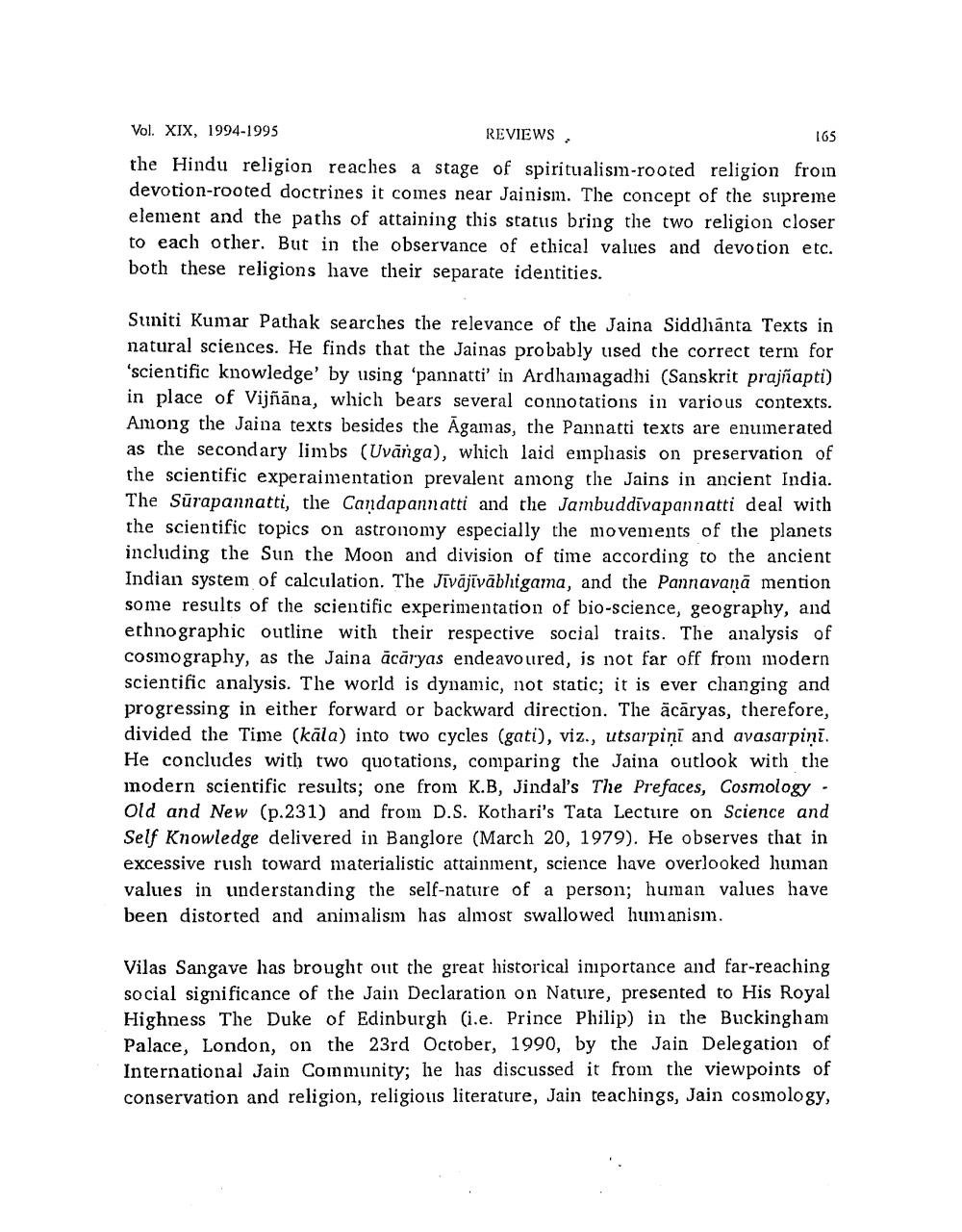________________
165
Vol. XIX, 1994-1995
REVIEWS the Hindu religion reaches a stage of spiritualism-rooted religion froin devotion-rooted doctrines it comes near Jainism. The concept of the supreme element and the paths of attaining this status bring the two religion closer to each other. But in the observance of ethical values and devotion etc. both these religions have their separate identities.
Suniti Kumar Pathak searches the relevance of the Jaina Siddhanta Texts in natural sciences. He finds that the Jainas probably used the correct term for 'scientific knowledge' by using 'pannatti' in Ardhamagadhi (Sanskrit prajñapti) in place of Vijñāna, which bears several connotations in various contexts. Among the Jaina texts besides the Āgamas, the Pannatti texts are enumerated as the secondary limbs (Uvānga), which laid emphasis on preservation of the scientific experaimentation prevalent among the Jains in ancient India. The Surapannatti, the Candapannatti and the Jambuddivapannatti deal with the scientific topics on astronomy especially the movements of the planets including the Sun the Moon and division of time according to the ancient Indian system of calculation. The Jīvājīvābhigama, and the Pannavaņā mention some results of the scientific experimentation of bio-science, geography, and ethnographic outline with their respective social traits. The analysis of cosmography, as the Jaina ācāryas endeavoured, is not far off from modern scientific analysis. The world is dynamic, not static; it is ever changing and progressing in either forward or backward direction. The äcāryas, therefore, divided the Time (kāla) into two cycles (gati), viz., utsarpiņi and avasarpiņi. He concludes with two quotations, comparing the Jaina outlook with the modern scientific results; one from K.B, Jindal's The Prefaces, Cosmology. Old and New (p.231) and from D.S. Kothari's Tata Lecture on Science and Self Knowledge delivered in Banglore (March 20, 1979). He observes that in excessive rush toward materialistic attainment, science have overlooked human values in understanding the self-nature of a person; human values have been distorted and animalism has almost swallowed humanism.
Vilas Sangave has brought out the great historical inportance and far-reaching social significance of the Jain Declaration on Nature, presented to His Royal Highness The Duke of Edinburgh (i.e. Prince Philip) in the Buckingham Palace, London, on the 23rd October, 1990, by the Jain Delegation of International Jain Community; he has discussed it from the viewpoints of conservation and religion, religious literature, Jain teachings, Jain cosmology,




